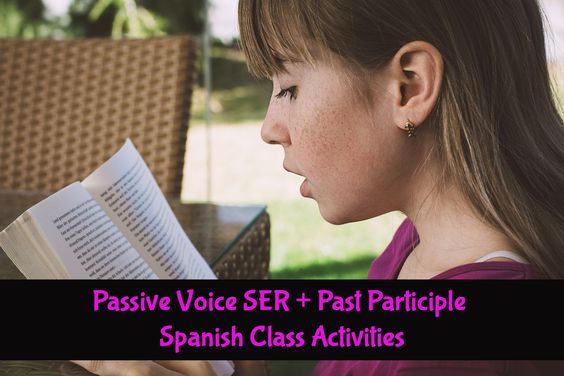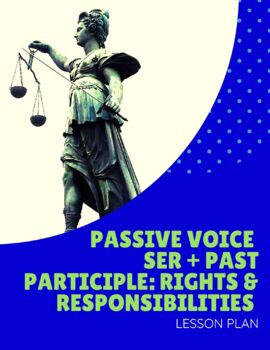
The Passive Voice SER is a grammatical form used in Spanish to indicate that the subject of a sentence is receiving an action rather than performing it. For example, when saying “La casa es construida por Juan” (The house is built by Juan) Juan is performing the action of building but in this sentence, he is not in focus and the passive voice has been used to indicate that the house is being affected by this action.
It is important for a student to have a solid understanding of the regular verb conjugations in the present, imperfect and past tenses before attempting to learn the Passive Voice SER, as each verb form must be conjugated correctly in order for the sentence to be properly constructed.
Here’s a Spanish lesson plan for high school students and a resources sheet with additional resources.
 Lesson Plan – Passive Voice SER + Past Participle: Rights and Responsibilities –
Lesson Plan – Passive Voice SER + Past Participle: Rights and Responsibilities –
Objectives
- Students candefine some basic terms related to rights and responsibilities ( e.g., I can define what a responsibility is, what a right is, etc.).
- Students can write definitions of some basic terms related to rights and responsibilities ( e.g., I can define what a responsibility is, what a right is, etc.).
- Students can discuss rights and responsibilities with someone, giving my opinion about the importance of certain rights and responsibilities.
- Students can give examples of where these rights and responsibilities might come into play.
- Students can identify and understand expressions that pertain to the law and basic rights (el deber, obedecer la ley, juzgar, etc.).
- Students can understand when the passive voice is used in a variety of texts to emphasize the topic of a sentence.
- Students can read infographics and texts pertaining to rights, especially consumer rights.
What’s included:
- Lesson Plan in Spanish
- ACTFL Standards
- Can-Do Statements
- Handouts and worksheets
- Presentación de la lección / Lesson Slides
- Activador (Warm-up)
- Boleto de salida / Exit Ticket
- Evaluación / Assessment
